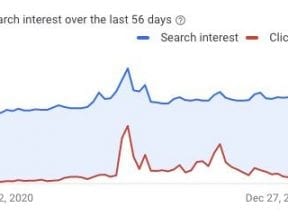On May 27, Google held its annual Marketing Livestream event. Google Ads is typically a focus. This year was no different. Google addressed updates to Google Ads as well as its continued push toward user privacy and smarter automation.
Only a handful of the updates could produce noticeable performance changes for advertisers. Many are either enhancements to current features or expanded to all advertisers from only a portion previously. Nonetheless, I’ll review the most impactful updates in this post. Google’s support page contains a complete list.
Performance Max Campaigns
Currently in beta, Performance Max campaigns are opening to most advertisers. This campaign type broadens automation as advertisers can create one campaign for all of Google’s platforms, including:
- Search,
- Display,
- Discover,
- Gmail,
- Maps,
- YouTube.
Advertisers choose their goal(s) and submit various audiences and keywords for targeting. Advertisers also submit copy assets, including images, videos, and text. The format is similar to a responsive display ad where Google rotates all the assets and shows the best performing combinations, using machine learning to drive results.
I used the Performance Max campaign type for a lead generation client and experienced below-average results. My cost per conversion was higher than the account’s average. The campaign generated only a handful of conversions. The lack of transparency is concerning. There is no way to view how various assets are performing and what properties they appear on.
Nonetheless, Performance Max campaigns have the potential to provide advertising exposure across many properties and platforms. Certainly it’s more efficient to submit at once all assets and targeting criteria. A better way to view Performance Max results could be as a top-of-funnel tactic that helps convert users down the line.
This campaign type has value, especially if Google would provide more transparency.
Customer Match
With Google avoiding third-party cookies, first-party data will become much more important. Customer Match allows advertisers to upload email addresses and then target those users across all networks when signed into Google. Customer Match can nurture prospects who have submitted their email addresses, such as for newsletter subscriptions or whitepaper downloads.
The hurdle for using Customer Match has been a $50,000 lifetime spend threshold — accounts must have spent at least $50,000 since their inception. Google is now easing this restriction, but with a catch. Any advertiser, regardless of lifetime spend, can now use Customer Match. But only advertisers who have met the $50,000 threshold can directly target the users from the uploaded addresses. Otherwise, the Customer Match lists can only be layered into campaigns in observation mode. Advertisers can see the performance of their lists without the ability to set bid adjustments or target the users directly.
Despite the spend threshold, the larger point is to push advertisers to collect first-party data. Audience targeting will be drastically changing. Customer Match is a helpful way for advertisers to target warm audiences from existing info.
Expanded Product Feeds
Google Shopping continues to be the top revenue source for most ecommerce advertisers. Over the years, Google has broadened Shopping’s reach to include the Display Network, Search Partners, and YouTube. This requires advertisers to ensure their product feeds contain quality images, relevant product names, clear product descriptions, and much more.
Google has now expanded product feeds to video action campaigns. This campaign type shows a set of products within video ads on YouTube. Consumers can view the products in the video ad and click.
Product feeds are also in beta for Discovery campaign ads. Discovery advertisers can submit product info to be shown across Google properties, similar in concept to Performance Max campaigns. It’s another way for Google to promote its Shopping service.
Greater Insights
Earlier this year, I addressed the benefits of Google Ads’ Insights tab, which include identifying new target keywords, audiences, themes, and locations. I cautioned readers to consider the information as mostly clues and, potentially, as new opportunities. Google announced at the Marketing Livestream event that it would add features to Insights, including:
• Demand forecasts,
• Consumer interest themes,
• Audience info.
The demand forecasts for trending search interest are likely the most helpful to advertisers.





